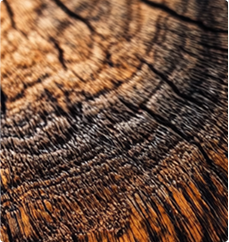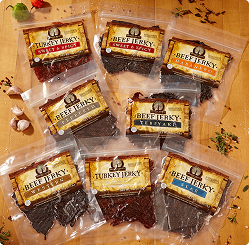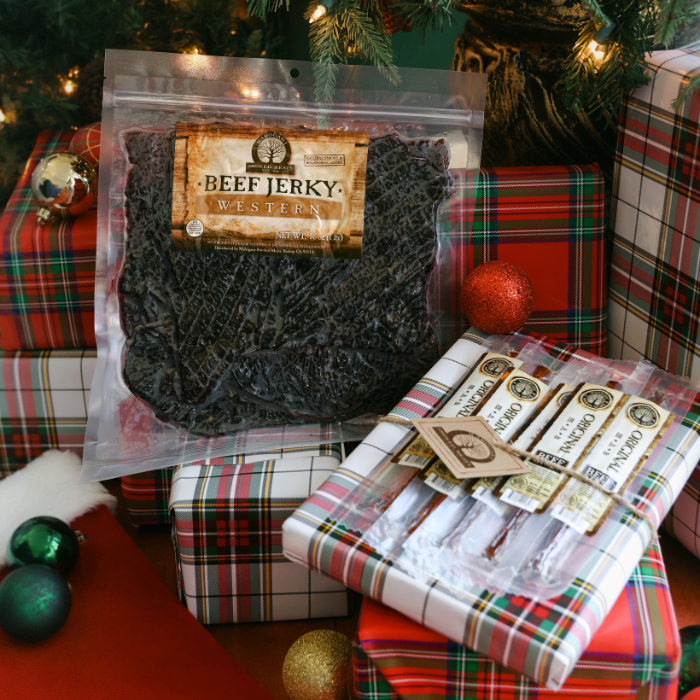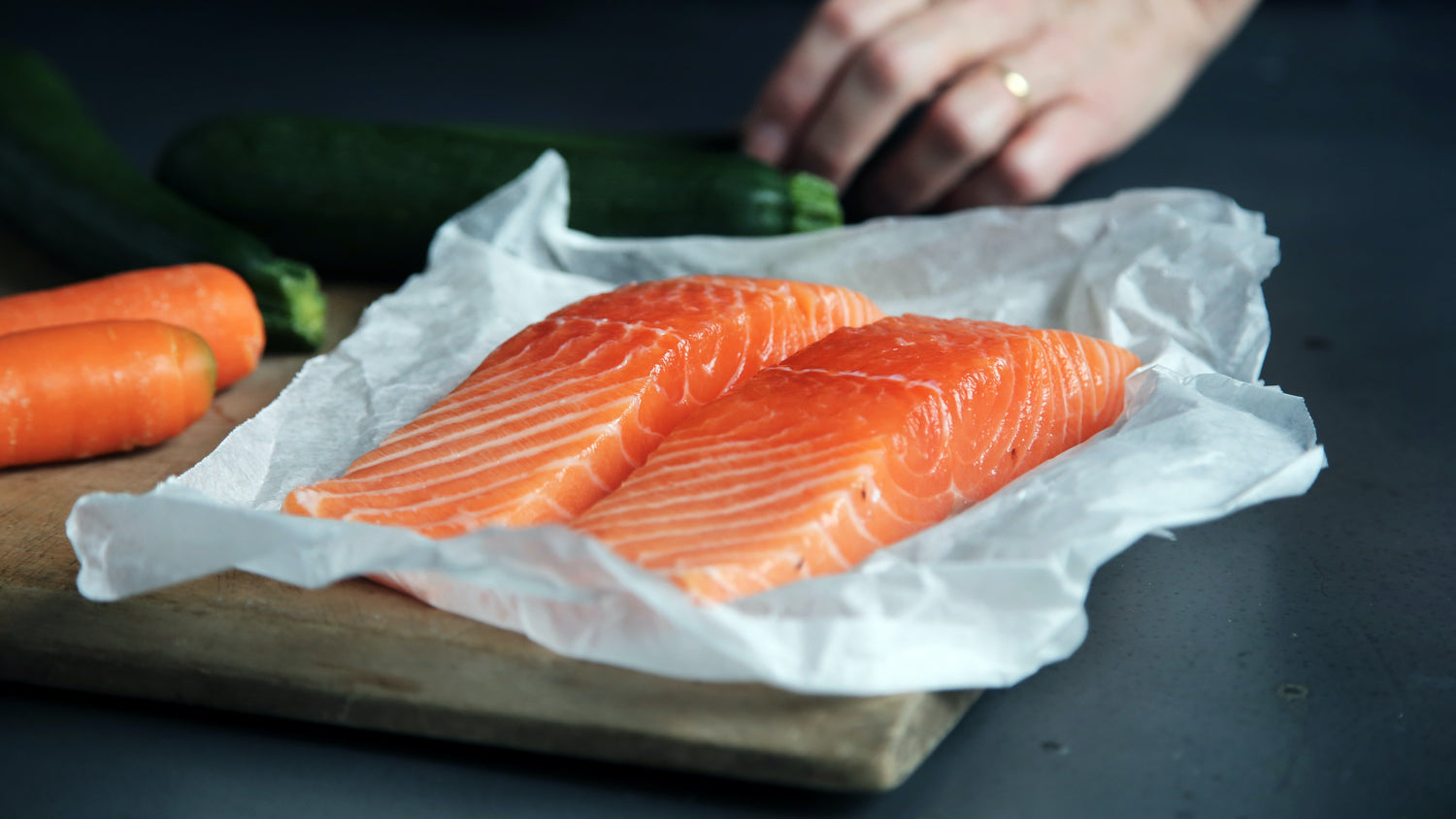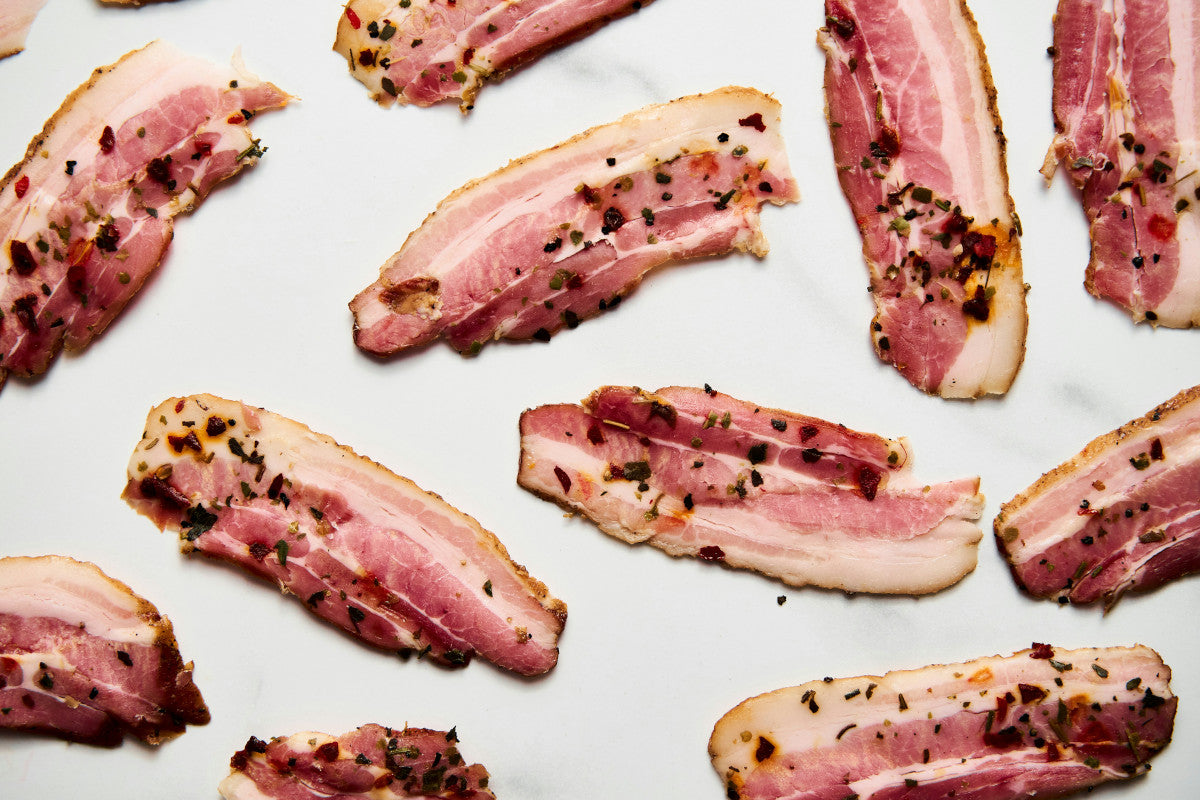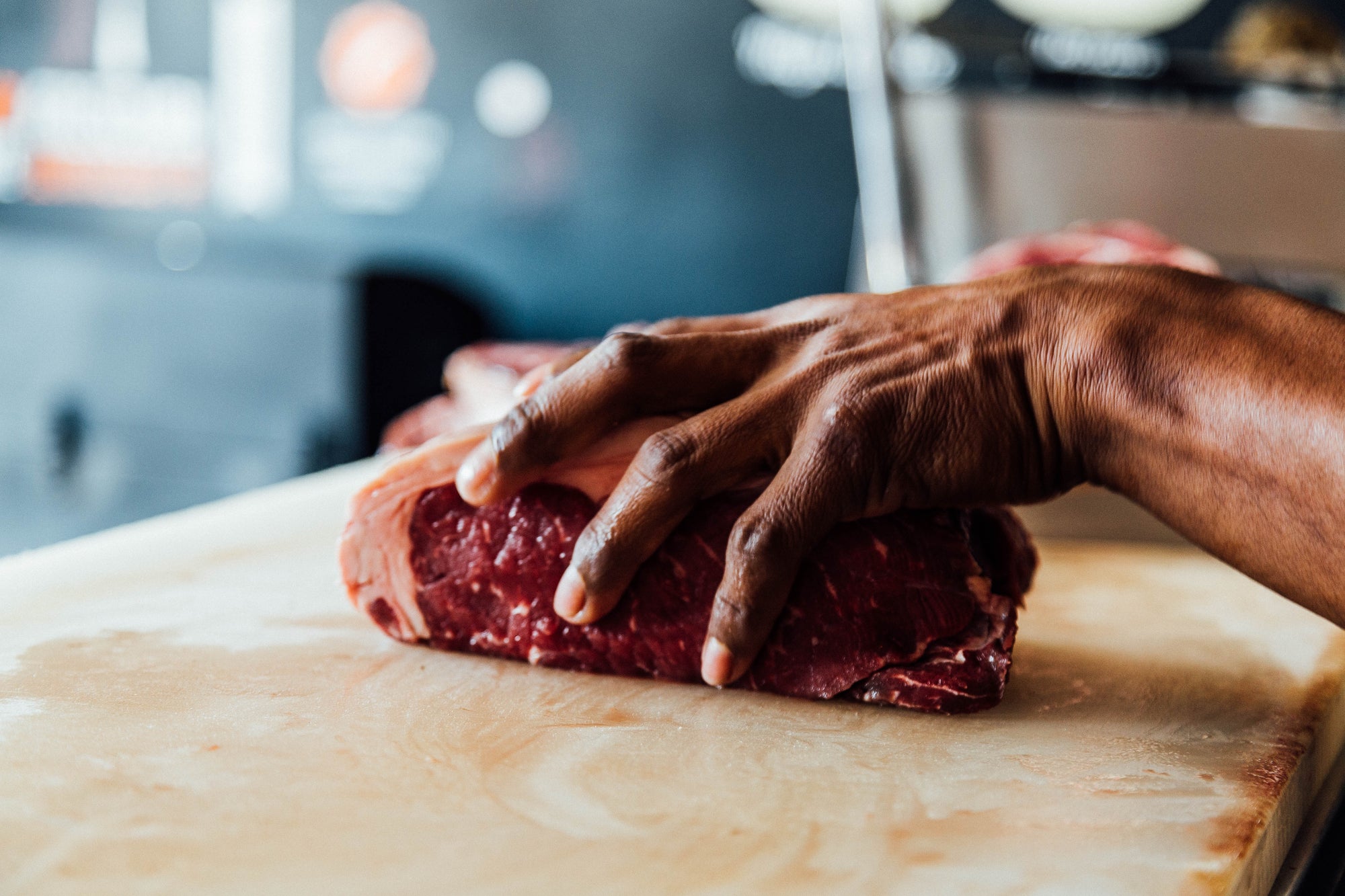The allure of jerky is undeniable. It’s a delicious, savory, healthy snack that has captured hearts worldwide. And while you’re likely familiar with the top contenders like beef or turkey jerky, there are other more exotic jerky types waiting to be discovered.
One of these is fish jerky.
You’re missing out if you haven’t tried it yet. We’re going to help you discover firsthand what makes it so special in this guide to the best fish jerky online.
You’ll learn about the best fish for jerky and you’ll also find out where you can find delicious smoked fish jerky for sale online - right here at Mahogany Smoked Meats! We craft our jerky using the time-honored traditions of jerky making, which we’ve perfected over the past century and counting.
Our Grade-A Wild Coho Salmon Jerky is sure to exceed your expectations and become a staple in your snack arsenal. Let’s first describe what makes fish jerky in general such a unique variety.
Why We Love Fish Jerky
Fish jerky is an adventure for the senses, a testament to culinary craftsmanship, and a delicious source of unparalleled health benefits. Here are a few reasons we encourage you to take a chance on it - whether you’re a fish person or not!
Health Benefits: Omega-3s and More
Fish, especially wild-caught varieties like salmon, are loaded with a treasure trove of health benefits. At the forefront are the Omega-3 fatty acids - EPA and DHA.
These are potent nutrients known for their heart-protective properties, anti-inflammatory effects, and their crucial role in brain health. Consuming Omega-3s can aid in reducing the risk of chronic diseases and improving overall well-being.
But that's not all. Fish jerky retains most of the protein from its raw counterpart, making it a fantastic source of lean protein. Plus, it's lower in saturated fats compared to most red meat jerkies, offering a healthier snacking alternative.
You can learn more about the health side of jerky in our blog. We have resources on beef jerky calories, beef jerky for weight loss, beef jerky protein, and other benefits of beef jerky.
Or, learn about the nutritional benefits of popular beef jerky alternatives like turkey jerky nutrition, elk nutrition facts, buffalo jerky nutrition facts, and more.
The takeaway here though is that fish is one of the healthiest jerky types you can have in your arsenal. And just wait till you get that first taste…
Unique Flavor Profile: A Treat for the Taste Buds
While health benefits are a major draw, let's not sidestep the sheer culinary joy of fish jerky. The transformation of fresh fish to jerky condenses its flavors, resulting in a richer, more concentrated taste experience.
If you've enjoyed fish on its own, imagine those flavors intensified, mingling with carefully chosen seasonings, and culminating in a bite-sized piece of gastronomic wonder.
The natural flavors of fish, especially salmon, are subtly sweet and savory. When these are paired with the right marinades and seasonings, the result is a harmonious symphony of taste that's distinctly different from traditional beef or poultry jerky.
It’s an elevated snack that appeals to both the gourmet and the health-conscious, a rare combination in the world of snacking. That being said, not all fish jerky is created equal. So, what is the best fish for jerky?
What is the Best Fish For Jerky?
Just as choosing the best cut for beef jerky or the best cuts of elk meat is paramount, choosing the best fish for jerky influences the taste, texture, and health benefits of the final product.
That being said, we’ll unpack the common fish varieties used and explain why we prefer Alaskan Salmon.
Common Fish Varieties Used For Jerky
There are several types of fish that have found their way into the jerky world, each bringing its own unique characteristics to the table. Here are the most popular:
- Ahi (Tuna): Ahi, particularly Yellowfin, has become a popular choice for jerky enthusiasts. It’s known for its rich flavor and deep red color. Its moderate fat content allows it to retain moisture while still providing that desired chewy texture.
- Rainbow Trout: This fish makes for a subtly delicious jerky with its mild, nutty flavor. Its lean meat dries well, resulting in a product that's both tender and flavorsome.
- Cod: A white, flaky fish with a delicate taste. Cod is often enjoyed fresh, but its low-fat content makes it suitable for jerky as well, offering a light and airy bite.
- Perch: This is another lean fish that provides a mild and slightly sweet flavor profile. Its small size can make for bite-sized jerky treats.
- Pike and Pickerel: These freshwater fish, both known for their lean meat, are often clubbed together. They have a mild, almost bland flavor, which serves as an excellent canvas for various marinades and seasonings.
- Mackerel: While it is on the oilier side, Mackerel is rich and bold in flavor. It might not be everyone's first choice for jerky due to its higher fat content, but it can offer a richer, more robust taste when prepared right.
It's important to note that when it comes to jerky, leaner fish varieties tend to be preferred. Oily fish, while delicious when cooked in other ways, can become overly greasy when dehydrated.
This can affect the jerky's shelf life and overall texture. Hence, the general consensus leans towards fish with lower fat content for optimal jerky results. That being said, here’s why Alaskan Salmon is the best fish for jerky.
Why We Think Alaskan Salmon is the Best Fish For Jerky
The best fish for jerky, though, is unanimously Alaskan Salmon. Specifically, Grade-A Wild Coho Salmon. That’s what we use, and it’s why we’ve earned a reputation as the #1 choice online for the best fish jerky. But what makes it so special?
- Nutrient-Rich: Alaskan Salmon is a powerhouse of nutrients. It's brimming with Omega-3 fatty acids, high-quality protein, and a range of essential vitamins and minerals. These benefits are preserved when converted into jerky, offering a snack that's as nutritious as it is delicious.
- Flavor Balance: Salmon strikes a perfect balance between the bold flavors of mackerel and the subtlety of trout. Its natural taste is both savory and slightly sweet, providing an excellent canvas for a variety of seasonings and marinades.
- Texture Perfection: Alaskan Salmon has a firm yet flaky texture. When dehydrated, it offers the quintessential jerky chewiness, but with a unique, luxurious feel that's unmistakably salmon.
- Sustainability: Wild-caught Alaskan Salmon is also a sustainable choice. The fisheries in Alaska are renowned for their responsible management practices, ensuring that you're enjoying a treat that's kind to both your palate and the planet.
Now, you can save yourself time and trouble by heading over to our site and trying our fish jerky firsthand. But if you want to learn more about what separates the best from the rest, continue reading below…
What to Look For When Choosing the Best Fish Jerky Online
Trying to find the best fish jerky online can be overwhelming. With so many options to choose from, how can you tell which brands and products are truly the best without trying them all yourself? Here is a quick guide to finding a quality product that won’t disappoint:
Ingredient Selection and Quality
Fish jerky should have minimal ingredients: high-quality fish, a blend of seasonings, and maybe a marinade or two. The shorter the ingredient list, the closer you are to a natural, unadulterated product.
The type and quality of the fish are paramount. Whether it's Wild Coho Salmon or Yellowfin Tuna, ensure that the fish is sustainably sourced and free from harmful contaminants.
Tantalizing Taste and Texture
The best fish jerky should delight your taste buds with a harmonious blend of seasonings that enhance, not overshadow, the natural flavor of the fish. Be wary of products that use excessive salt or artificial flavors as crutches.
A good jerky strikes a balance between being chewy yet not overly tough. The texture should be satisfying, inviting you to savor each bite slowly.
Preservation Techniques: Natural vs Artificial
Nature knows best. So, look for jerkies that use natural preservation methods like smoking, salting, or vinegar. These techniques not only enhance flavor but are also devoid of synthetic chemicals.
Whatever you do, steer clear of products that list artificial preservatives, colorings, or flavorings. Such additives might prolong shelf life but can detract from the jerky's overall quality and health benefits.
Customer Reviews For Peace of Mind
The best way to get a sense of what you can expect from a brand or product before buying is by diving deep into customer reviews.
They can provide invaluable insights into the product's taste, texture, and overall quality. Positive testimonials and high ratings are often indicators of a reliable product.
That being said, look for unbiased, third-party reviews off of the company’s website ideally. These can’t be doctored, and typically, offer far superior insights.
Brand Transparency: Know Where Your Fish Comes From
Ethical brands are proud of their sourcing practices. Choose brands that are transparent about where they source their fish, the methods used, and their commitment to sustainability.
Certifications like "MSC Certified" or "Wild-Caught" lend credibility and showcase a brand's commitment to environmental responsibility.
Armed with these insights you’re now equipped to head out and find high-quality fish jerky online. Or, save yourself the hassle and skip to the good part - ordering the best fish jerky online right here at Mahogany Smoked Meats!
Where Can You Find the Best Fish Jerky Online?
Mahogany Smoked Meats is the best online jerky brand with more than a century of experience in smoking meats under our belt. You may have come to know and love our traditional treats like beef jerky, but just wait till you get a taste of our fish jerky…
Why Our Fish Jerky is the Best Choice Online
Fish jerky can be tough to get right - but you can rest assured that we’ve perfected the process here at Mahogany Smoked Meats. Here’s what separates our fish jerky from the rest:
- Uncompromising Quality: We are unyielding in our commitment to quality. Our jerky is crafted from hand-filleted, Grade-A Wild Coho Salmon, ensuring each bite offers the pure, unadulterated taste of the sea.
- Authentic Alaskan Flavors: Our jerky is a product of the esteemed Alaskan Smokehouse®. We double-smoke our fish to impart a deep, rich flavor profile that is unmistakably Alaskan, serving as a delicious testament to our heritage.
- Nutrition Packed: Not only is our jerky a treat for the taste buds, but it's also a powerhouse of nutrition. It’s high in protein and brimming with healthy Omega-3 acids. It’s the perfect snack to keep you energized and nourished, whether you're hiking up a mountain or powering through your workday.
- Craftsmanship in Small Batches: Mass-produced? Not on our watch! We cherish the art of jerky-making, and ensure every piece is given the attention it deserves by creating in small batches.
- Satisfaction Guaranteed: We stand confidently behind our product. So much so that we guarantee your satisfaction. If our jerky doesn't delight every inch of your palate, we want to know.
- Proudly Made in the USA: In an era of outsourced production, our jerky is proudly crafted on American soil, upholding a legacy of quality and local craftsmanship.
Don’t Just Take Our Word For it!
We’re confident you’re going to love our fish jerky, but you don’t just have to take our word for it…
“Not being a huge fish eater and only caring for wild-caught fish from the ocean, this is the best way to eat salmon as far as I'm concerned. Even if this were wild caught in a river, the smoking makes it a very tasty treat. I love the fact they come in 3 oz bags as it is just right for a serving when I want some fish. Smoked salmon is the only way to eat salmon as far as I'm concerned and the fact it comes in jerky makes it even more desirable for me as it doesn't require being frozen for longer-term storage. It gets an easy 5 stars from me and would recommend it to anyone who likes or is questionable about trying the King Salmon Smoked Jerky” - Travelin
“I love this smoked salmon jerky. I usually buy the larger bag when I’m driving through bishop, also order online and it is so good” - Karen
“I thought the taste was really good. I enjoyed the first pack and I am looking forward to the second.” - Onel
Other Amazing Jerky Varieties We Have For You
While our Smoked Salmon Jerky remains a fan favorite, our passion for premium jerky doesn't stop there. Mahogany Smoked Meats boasts an array of jerky varieties, each echoing our dedication to quality, flavor, and tradition.
Browse our beef jerky for sale, wild boar jerky for sale, buffalo jerky for sale, elk jerky for sale, and other smoked meats we have in store for you.
Whether you’re a seasoned jerky connoisseur or just beginning your journey, our collection promises to entice and satisfy, showcasing the very best of what jerky can be. So, what are you waiting for? Get the best fish for jerky today!
Closing Thoughts on the Best Fish for Jerky
In the vast seascape of choices, finding the pinnacle of fish jerky can seem like navigating uncharted waters. But with knowledge on your side, you're equipped to reel in the very best fish jerky online.
You can learn about how to make fish jerky in our blog. Or explore resources like how to perfect your elk jerky recipe, what you need to know about enjoying beef jerky while pregnant, how thick to cut jerky, smoked jerky vs dehydrated jerky, how to store beef jerky, and others we’ve created.
Remember, while various fish offer their unique flavors and textures, it's the lean, succulent allure of Alaskan Salmon, particularly the Wild Coho variety, that stands unrivaled.
And when it comes to treating yourself or your loved ones to this marine delicacy, why settle for anything less than the finest? Dive deep into the Mahogany Smoked Meats collection and experience the best fish jerky today!







